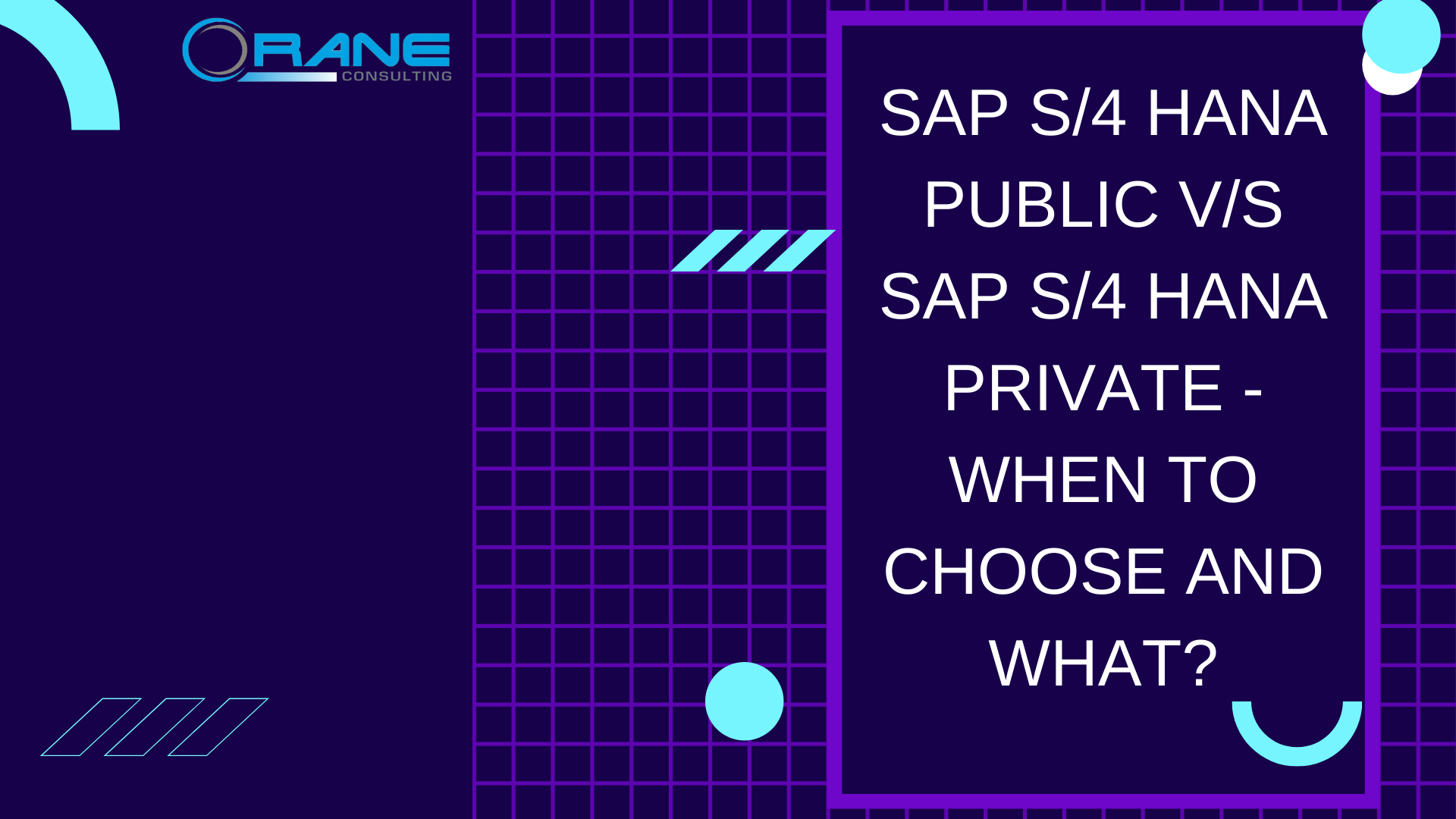Introduction:
A pivotal decision that an IT team faces as they design their modernization strategy is “how to implement” the technology and infrastructure platform to power their business.
And while a host of solutions present themselves as win-win candidates, there’s nothing that overshadows the buzz of choice between a private cloud and a public cloud.
Customarily, this choice is tackled through a balanced consideration of cost, business risk, and competing technology (e.g., cloud versus on-premises). Oftentimes, the decision results in an organization choosing a public cloud or private cloud solution. Of course, there are many different reasons why organizations might select either option. Still, it’s imperative to prioritize the most important factors to understand when deciding which option is right for your company’s goals.
This article takes an objective look at the key considerations for selecting appropriate platforms based on what your business is trying to accomplish in terms of IT goals. We explore different scenarios that illustrate why, when, and what to choose when it comes to deciding between SAP S/4HANA Private and Public cloud.
Note: Choosing between private and public cloud for a modern enterprise platform is a decision that’s bound to have long-term ramifications. After all, various facets from investment to ROI and manageability to sustenance depend on this ideal selection. So, we’d say ‘choose wisely.’
What is SAP S/4HANA Private Cloud?
SAP S/4HANA Private Cloud is a private cloud computing service with all the advantages of SAP HANA (an RDBMS) that enables enterprises to run their IT infrastructure without the need for external hardware or data centers.
SAP S/4HANA Private Cloud is ideally suited for any use case that involves enterprise-level data analytics and requires computing power that can be scaled to the demand of a large organization. It’s safe to say that with SAP S/4HANA private cloud edition, we’re talking scalability, manageability, and high availability.
What is SAP S/4HANA Public Cloud?
SAP S/4HANA Public Cloud is a service model designed explicitly for mission-critical applications and services such as analytics, data warehousing, and application hosting.
SAP S/4HANA public cloud also offers an agile platform that allows businesses to rapidly innovate their business processes without having to re-architect everything. By running SAP S/4HANA on a public cloud, you can scale up your operations to meet the changing demands with ease while achieving cost savings based on power and data center management.
4 Reasons to Choose SAP S/4HANA Private Cloud Edition
1. Access Control: The SAP S/4HANA Private Cloud allows for the application of enterprise-level security control. It renders a secure environment for data to be processed directly on SAP HANA and grants access only to authorized users within the organization. The centralized infrastructure provided with SAP S/4HANA Private Cloud further commissions for the platform to be managed from within the organization and offers complete transparency.
2.Scalability: The SAP S/4HANA Private Cloud can scale up and down as needed to meet the needs of different load patterns within an organization. This means that the deployment of S/4HANA Private Cloud does not require hardware and software investment, as all the computing power required is virtualized and supplied by SAP HANA.
3. Security and Business Continuity: The private Cloud help protect sensitive data belonging to the organization from potential security threats courtesy of the entirety of data processing being hosted on the cloud. This means that data is not vulnerable to physical attacks on the information centers. Naturally, this helps safeguard customers, partners, employees, and other associated entities. As far as business continuity is concerned, SAP S/4HANA Private Cloud provides a resiliency level beyond simple failover capability to enhance the IT landscape for an organization. It accommodates a high degree of hands-on monitoring and control over the operational environment.
4. On-Premise and Off-Premise: Access to SAP S/4HANA can be provided using either on-premise or off-premise hardware as long as it’s connected to the Internet. This means that you have the option to use both the cloud and on-premises systems, depending on your business needs at a particular time.
Who is SAP S/4HANA Private Cloud for?
The SAP S/4HANA Private Cloud is for a company that has separated its core business into different modules or departments. To put it straight, S/4HANA Private Cloud serves as an extension of the enterprise-wide SAP architecture and is connected to the main SAP system over a local area network connection.
An example of this would be a company with a legal department, accounting department, and marketing department. Each of these departments would have a local SAP S/4HANA Private Cloud connected to the main SAP system. This, in turn, would allow for data and processes to be transferred between the main SAP system and each departmental cloud to standardize business processes between all three areas.
Who is SAP S/4HANA Public Cloud for?
The SAP S/4HANA Public Cloud is for companies who want to extend their SAP architecture across the enterprise. It provides flexibility as it can be changed to suit a particular branch or division of the company so that there are no restrictions whatsoever on where systems reside.
A single SAP S/4HANA Public Cloud is used by the entire business for all areas, regardless of which area produces the data. The Public Cloud can also be linked to multiple SAP systems to facilitate sharing of information and processes across them.
Which of the Two is Better?
Simply put, it all comes down to organizational requirements. If the company fancies the control and security that a private cloud offers, then the SAP S/4HANA Private Cloud is preferable.
Contrarily, if they need more flexibility to share processes with other companies, they might want to use a public cloud. The choice between the two is a business decision — one that rests on the understanding of the company’s needs.
So, the companies need to ask themselves how do these platforms fit within their software architecture? How do they sit in or perhaps befit the company’s SAP environment (SAP ERP or Business Suite), and how can they be integrated?
Answering these questions will help them to decide the best fit for their needs. And as far as the compliances with these platforms, in the long run, is concerned, there’s hardly anything to worry about. Well, SAP plans to constantly support and advance both public and private cloud models. So, it’s a given that they would be long-term answers to all the organizational issues and needs.





